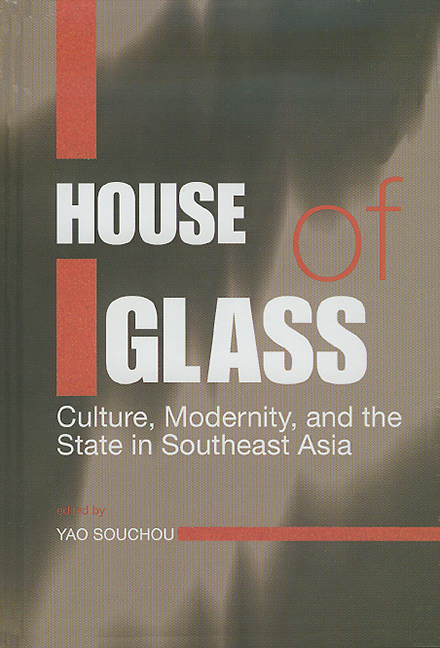Book contents
- Frontmatter
- Contents
- Preface
- Contributors
- Introduction
- Part One Local desire and global anxieties
- Part Two Identity, the state, and post-modernity
- Part Three State power, development, and the spectre of nation-building
- 7 Cultural claims on the new world order: Malaysia as a voice for the Third World?
- 8 (De)constructing the New Order: capitalism and the cultural contours of the patrimonial state in Indonesia
- 9 The state and information in modern Southeast Asian history
- Part Four
- Index
9 - The state and information in modern Southeast Asian history
from Part Three - State power, development, and the spectre of nation-building
Published online by Cambridge University Press: 21 October 2015
- Frontmatter
- Contents
- Preface
- Contributors
- Introduction
- Part One Local desire and global anxieties
- Part Two Identity, the state, and post-modernity
- Part Three State power, development, and the spectre of nation-building
- 7 Cultural claims on the new world order: Malaysia as a voice for the Third World?
- 8 (De)constructing the New Order: capitalism and the cultural contours of the patrimonial state in Indonesia
- 9 The state and information in modern Southeast Asian history
- Part Four
- Index
Summary
From the nineteenth century onwards, communications embodied the idea of progress. The steamship, the railway, the telegraph attested to the supremacy of the West. They represented the harnessing of new forms of power; the triumph of steel over wooden construction; the conquest of time and distance; the intoxicant of industrial capitalism. They buttressed a complex of power relations that underpinned Europe's command of modernity — power over nature, power over people and their movement, power to more adequately predict events — above all, power to change the structure of systems (Elvin 1986).
Information and communications framed imperial technocracy. They blazoned across the globe a vision of Europe and sought to project a sense of her generosity. The ideal was a civilization “united not by force but by information” (Adas 1989, Richards 1993, p. 1). Communications underpinned the “psychological bluff” of European omnipotence and prestige. It propelled the languages of the metropolis to the remoter regions of the Earth and created a new ritual speech for their inhabitants — one that would, it was hoped, turn them immutably towards the metropolis for their tutelage. Whether it was in English, Dutch, Spanish, French, or American, new vocabularies of authority were created that inculcated the keywords of European power. The Europeans also reconfigured the status of vernacular tongues in a way that privileged some utterances and disqualified others. The attempt to frame the state in this way was not novel in itself. Throughout Asia, pre-colonial states had sought to harness ideology to the service of the centre (Reid 1993, pp. 181–83, 192–201). Their attempts to do so were bolstered in the face of the European threat and continued into the colonial period. However, their capacity to project themselves in this way diminished dramatically in the face of the blinding new innovations that radiated from the West.
- Type
- Chapter
- Information
- House of GlassCulture, Modernity, and the State in Southeast Asia, pp. 213 - 240Publisher: ISEAS–Yusof Ishak InstitutePrint publication year: 2001



